Hip-hop culture has emerged as one of the most influential forces in modern society, serving as both a reflection and a catalyst for cultural change. Rooted in the neighborhoods of the Bronx, New York City, this vibrant art form has blossomed into a global movement, blending music, poetry, and visual art to provide a unique lens through which society can view itself. Through its lyrical content, beats, and cultural expressions, hip-hop offers profound commentary on everything from systemic inequalities to personal struggles, making it a powerful tool for social commentary and cultural critique. From its origins to its current influence, hip-hop continues to shape and reshape the way we understand ourselves and our world, making it an essential topic for anyone seeking to uncover the deeper meanings behind this iconic cultural phenomenon.
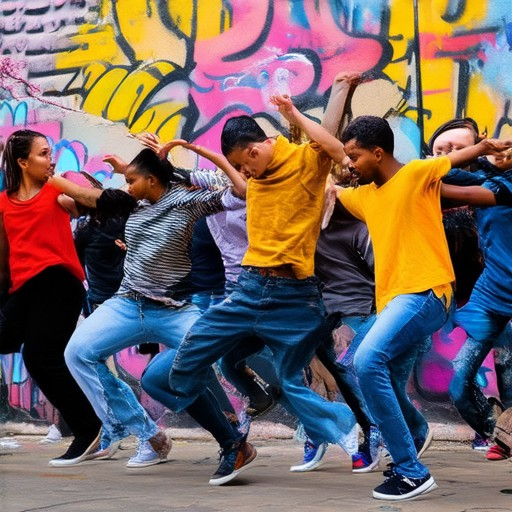
What is the Cultural Expression of Hip-Hop?
Hip-hop is a vibrant and multifaceted cultural phenomenon that has had a profound impact on music, art, fashion, and societal norms. Its roots trace back to the late 1960s and early 1970s in New York City, particularly in the Bronx, where African American and Puerto Rican communities came together to create a unique form of artistic expression. Over time, hip-hop has evolved into a global movement, influencing various aspects of contemporary culture.
Four Pillars of Hip-Hop Culture
The foundation of hip-hop culture is built upon four key elements:
- DJing/Turntablism :
The art of DJing involves blending records, scratching, mixing, and beatmatching to create rhythmic beats and soundscapes. Pioneers like Afrika Bambaataa and DJ Kool Herc are often credited with laying the groundwork for hip-hop as we know it today. Turntablism has become a cornerstone of hip-hop culture, with DJs using vinyl records to tell stories, create moods, and bring audiences into a shared musical experience. - MCing/Rapping :
Rappers use their voices as instruments, delivering lyrics that tell stories, express personal experiences, and reflect social issues. The MC (Master of Ceremonies) role is central to hip-hop performances, with artists like Nas, Kendrick Lamar, and Tupac Shakur using their words to convey wisdom, emotion, and social commentary. - B-Boying/Breaking :
Breakdance is a style of street dance that originated in the Bronx. It involves intricate footwork, body movements, and freezes that are performed to the beats of hip-hop tracks. Breakdancers like Crazy Legs and Mr. Freeze have become iconic figures in hip-hop history, showcasing the physicality and creativity of the culture. - Visual/ Graffiti Art :
Graffiti art is a visual expression of hip-hop culture, often featuring bold, colorful murals that depict themes of urban life, social issues, and cultural icons. Artists like Jean-Michel Basquiat and Keith Haring have blended hip-hop aesthetics with fine art, creating works that bridge the gap between street art and high culture.
Evolution and Subgenres
Hip-hop has evolved over the decades, giving rise to various subgenres and styles. East Coast hip-hop, represented by artists like The Notorious B.I.G., focuses on storytelling and gritty realism, while West Coast hip-hop, championed by Tupac and Snoop Dogg, often incorporates laid-back vibes and gangsta rap. Southern hip-hop, dominated by OutKast and Lil Jon, brings a unique Southern twist with heavy basslines and party vibes.
Global Influence
Hip-hop has transcended geographical boundaries, becoming a universal language of youth culture. It has influenced music genres worldwide, from pop to rock, and has impacted fashion, language, and social expressions. The rise of streaming platforms has made hip-hop accessible to a global audience, further cementing its status as a dominant cultural force.
Social and Political Impact
Hip-hop has also served as a platform for social commentary and political expression. Artists like Public Enemy and Eminem have used their music to address issues such as systemic racism, economic inequality, and social injustice. The culture has played a significant role in shaping contemporary activism, particularly through movements like #BlackLivesMatter, which have used hip-hop aesthetics and language to amplify their messages.
Conclusion
Hip-hop is more than just music; it is a cultural tapestry woven with threads of art, history, and social change. Its influence extends far beyond entertainment, shaping the way people think, act, and express themselves. As hip-hop continues to evolve, it remains a powerful force in the ever-changing landscape of global culture.
How Does Hip-Hop Reflect Culture?
Hip-hop is more than just music—it’s a powerful reflection of cultural identity, social commentary, and artistic expression. Originating from the African American, Afro-Caribbean, and Latino communities in New York City during the late 1960s and 1970s, hip-hop has evolved into a global phenomenon that transcends boundaries and influences countless aspects of modern culture.
1. Origins and Evolution
Hip-hop emerged from the struggles and resilience of marginalized communities facing systemic oppression, economic hardship, and social injustice. Its roots are deeply tied to block parties, street culture, and the creative ways individuals found to express themselves amidst challenging circumstances. Over time, hip-hop has grown to encompass a wide range of styles, from East Coast rap to West Coast hip-hop, influencing fashion, language, and even political discourse.
2. Cultural Impact
Hip-hop has profoundly shaped contemporary culture in several key ways:- Fashion: The iconic streetwear associated with hip-hop, such as hoodies, sneakers, and baseball caps, has become a global fashion staple.- Language: The use of slang, phrases, and cultural references from hip-hop has permeated mainstream language, making it a defining feature of youth culture worldwide.- Social Justice: Many hip-hop artists have used their platforms to address issues like police brutality, systemic inequality, and racial justice, amplifying the voices of marginalized communities.
3. Artistic Expression
Hip-hop artists use their music to tell stories, share personal experiences, and critique society. From the narrative of urban life to reflections on mental health and societal norms, hip-hop provides a unique lens through which culture is explored and challenged. Artists like Kendrick Lamar, J. Cole, and Nas have used their music to delve into complex topics, often resonating with audiences on a deep level.
4. Global Influence
Hip-hop has transcended geographical boundaries, shaping cultures in Africa, Asia, Europe, and beyond. It has inspired local music scenes in countries like South Korea, Brazil, and the UK, creating hybrid forms of music that blend traditional elements with hip-hop beats. This cultural exchange highlights the universal appeal of hip-hop as a medium for storytelling and connection.
5. Future of Hip-Hop Culture
As hip-hop continues to evolve, it remains a dynamic force in shaping culture. From streaming platforms to social media, the way hip-hop is consumed and shared has changed, but its ability to reflect and shape cultural trends remains unchanged. The genre’s adaptability ensures that it will continue to play a central role in reflecting the complexities of modern life.
By its very nature, hip-hop is a mirror of the world around it, capturing the essence of human experience and fostering connections between people across generations and geographies. Its influence extends far beyond music, shaping how we express ourselves, engage with our communities, and understand the world we live in.
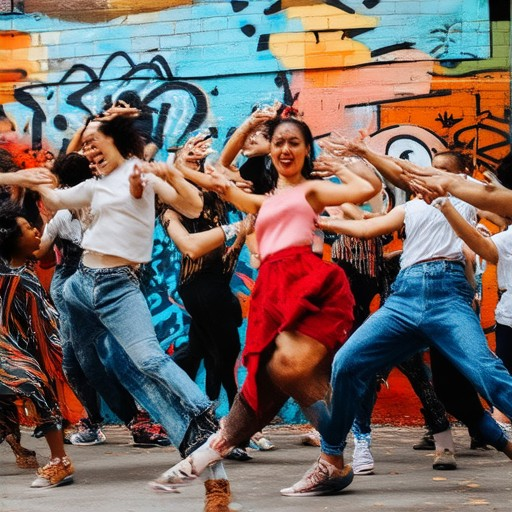
Understanding the Cultural Context of Hip Hop Dance
Hip hop dance is deeply rooted in African American culture, reflecting a rich history of resilience, creativity, and self-expression. Originating in the late 1970s in New York City, particularly among Black and Latino communities, hip hop dance has evolved into a global phenomenon. Its cultural significance extends far beyond mere entertainment, serving as a medium for storytelling, social commentary, and community building.
The roots of hip hop dance can be traced back to African traditions, including movements associated with West Africa’s vibrant drumming and dancing cultures. These traditions were carried to the Americas through the transatlantic slave trade, where they were adapted and reinterpreted by enslaved individuals. Over time, these movements evolved into what we now recognize as hip hop dance.
The Evolution of Hip Hop Dance
Hip hop dance didn’t emerge as a standalone art form until the 1970s, alongside other elements of hip hop culture like DJing, graffiti art, and rapping. Breakdance, in particular, became synonymous with hip hop, showcasing complex routines that combined precision, rhythm, and storytelling. As the culture spread globally, hip hop dance adopted influences from various communities, blending styles like popping, locking, and contemporary dance.
Key Components of Hip Hop Dance
- Breaking: This is the most visible aspect of hip hop dance, characterized by intricate footwork, body isolations, and fluid movements. Dancers often tell stories or convey emotions through their moves.
- Freestyle: Many hip hop dancers excel in improvisation, creating spontaneous choreography on the spot. This skill is highly respected in the community.
- Street Style: Hip hop dance often incorporates elements of casual, streetwear-inspired movements, making it accessible and relatable to many.
- Global Influence: While rooted in African American culture, hip hop dance has influenced dancers worldwide, leading to fusion styles like K-pop dance or European hip hop.
The Social and Political Impact
Hip hop dance has long served as a tool for social commentary and empowerment. It has been used to address issues like police brutality, systemic inequality, and gender dynamics, often through powerful visual narratives. Dancers use their bodies to challenge stereotypes and assert their presence in public spaces.
Notable Styles and Figures
Some of the most iconic hip hop dances include those popularized by figures like Michael Jackson, who incorporated elements of hip hop into his “moonwalk.” More recently, dancers like Lil Jon and Missy Elliott have brought hip hop dance into mainstream attention through music videos and live performances.
Hip hop dance continues to evolve, embracing new technologies and trends while staying true to its roots. It remains a vital part of urban culture, uniting people across generations and backgrounds through shared movements and stories.
For more insights into the world of hip hop dance, visit Abstract Hip Hop to explore articles, interviews, and in-depth analysis of the hip hop scene.
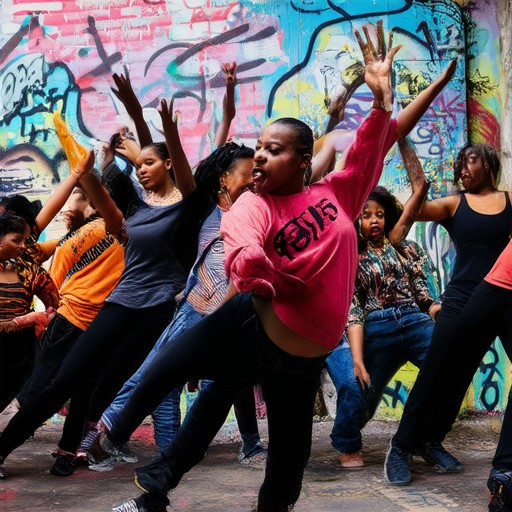
What Are the 4 Cultures of Hip-Hop?
- East Coast Hip-Hop: Characterized by its gritty storytelling and raw authenticity, this subculture originated in New York City. Artists like Nas and Jay-Z have dominated this scene, focusing on social issues and urban experiences.
- West Coast Hip-Hop: Known for its laid-back vibes and melodic flows, California-based artists such as Tupac and Snoop Dogg popularized this style. It often blends R&B influences and focuses on street wisdom.
- Southern Hip-Hop: Dominant in the Southern United States, this culture emphasizes bounce and party vibes. Artists like OutKast and Lil Jon brought this high-energy style to mainstream attention.
- Underground/Alternative Hip-Hop: This niche category includes experimental and avant-garde styles, often blending genres like jazz, funk, and electronic. Platforms like Abstract Hip Hop showcase these unique sounds.
The Four Pillars of Hip-Hop Culture
Hip-hop culture is built upon four foundational elements, each contributing uniquely to its identity and evolution. These elements, often referred to as the “four pillars,” are:
- MCing (Rapping)
The backbone of hip-hop, MCing involves rhythmic rhyming and storytelling. Rappers use their words to convey narratives, emotions, and social commentary, creating a powerful connection with audiences. From street corners to global stages, MCing remains a cornerstone of the culture, shaping artists like Nas, Kendrick Lamar, and Eminem. - DJing (Turntablism)
DJs spin vinyl records, scratching, mixing, and blending tracks to create dynamic beats. Turntablism originated in block parties and has evolved into a highly technical art form. Iconic figures like Afrika Bambaataa and DJ Spinach have redefined how music is experienced, making DJing an integral part of live performances and tapestries of sound. - Breakdancing (B-Boying/B-Girling)
Breakdance is the physical expression of hip-hop, combining acrobatics, fluidity, and precision. Dancers move to the rhythm, executing moves like footwork, spins, and air flips. Pioneered in the Bronx, b-boys and b-girls have taken this art form worldwide, showcasing its power through live shows and competitions. - Graffiti Art
Graffiti is the visual voice of hip-hop, using murals and spray-painted art to express creativity and social themes. Artists like Jean-Michel Basquiat and Banksy have brought graffiti into mainstream art circles, while maintaining its rebellious essence. Graffiti continues to transform public spaces globally, leaving lasting impacts on urban landscapes.
These pillars intersect to create a vibrant, multifaceted culture that transcends music, embracing fashion, language, and social change. From its origins in the late 1970s to its global influence today, hip-hop’s foundation lies in the fusion of these elements, making them inseparable from the culture itself.
Explore more about hip-hop culture on Abstract Hip Hop.
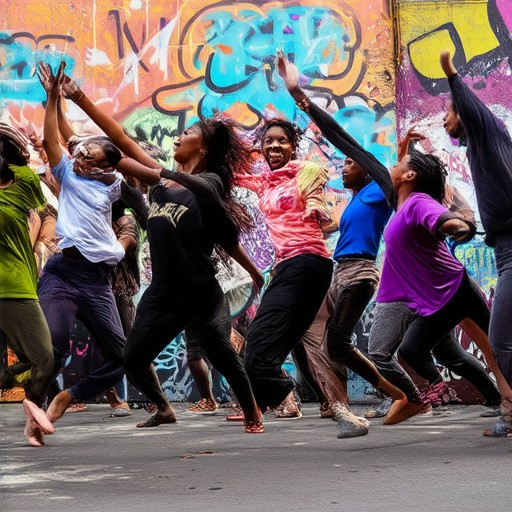
What Are the 7 Hip-Hop Styles?
Hip-hop is a vibrant and diverse musical genre with various subgenres that have evolved over time. Below are seven distinct styles that define the landscape of modern hip-hop:
- Boom Bap : Known for its heavy basslines, snappy drums, and intricate rhythms, boom bap is rooted in old-school hip-hop and has a raw, gritty sound. Artists like Nas and Jay-Z are often associated with this style.
- Golden Age Hip-Hop : Characterized by smooth, melodic flows and storytelling lyrics, this style emerged in the late ’80s and early ’90s. Artists such as LL Cool J and Biggie Smalls are often cited as pioneers of this era.
- Underground Hip-Hop : This niche style focuses on authenticity and social consciousness. Artists like Mos Def and Talib Kweli are known for their deep lyrical content and independent approach to music production.
- Ghetto Blaster : A subgenre popular in the Midwest and South, ghetto blaster combines Southern hip-hop elements with catchy hooks and high-energy beats. Lil Jon and OutKast are prominent figures in this style.
- Southern Hip-Hop : Originating from the Southern United States, Southern hip-hop is characterized by its slow-burning beats, hypnotic rhythms, and often narrative-driven lyrics. trap music has become a major part of this subgenre.
- East Coast vs. West Coast : This distinction refers to the regional differences between hip-hop artists from the Eastern U.S. (often associated with boom bap and streetwise narratives) and those from the Western U.S., which may lean toward more melodic and laid-back styles.
- Old School vs. New School : While not a definitive style, this term contrasts classic hip-hop from the ’70s and ’80s with contemporary hip-hop that incorporates modern production techniques and influences from other genres like pop and rock.
Each of these styles contributes uniquely to the evolution of hip-hop, reflecting the diversity of artistic expression and cultural influence within the genre. From the raw authenticity of boom bap to the polished productions of modern hip-hop, these styles continue to shape the sound and essence of music today.
Explore more about these hip-hop styles and their impact on the music scene by visiting our website .

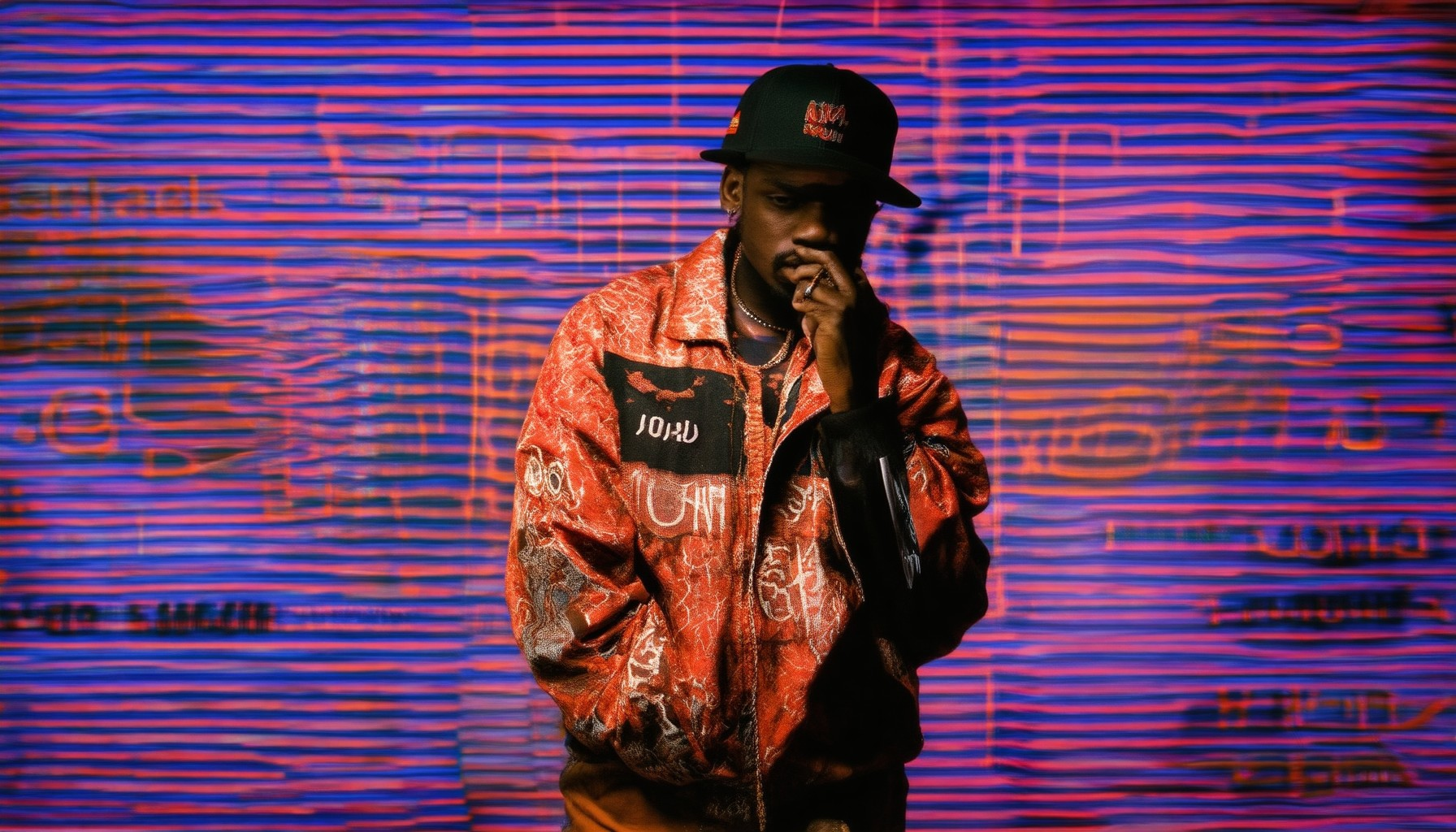



0 Comments